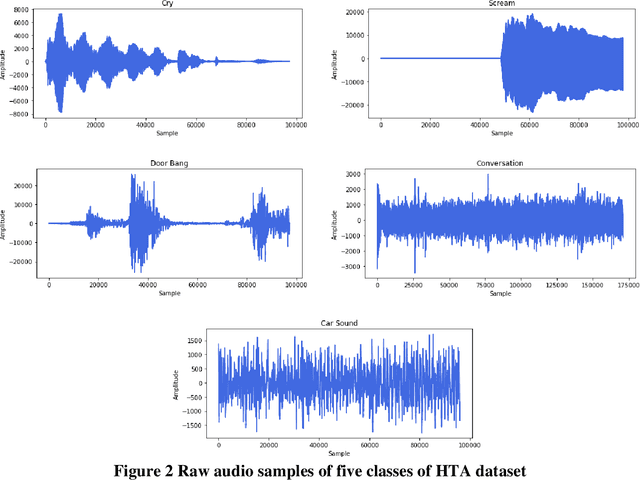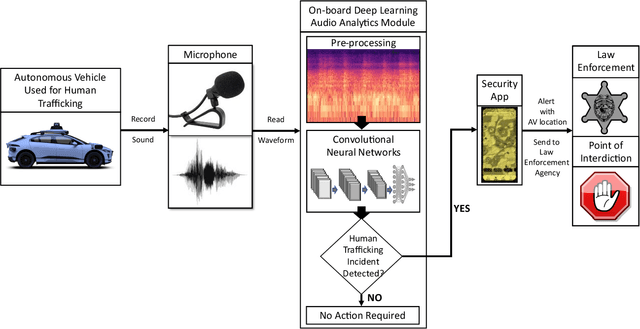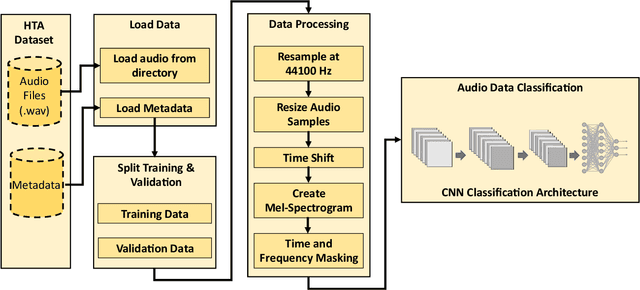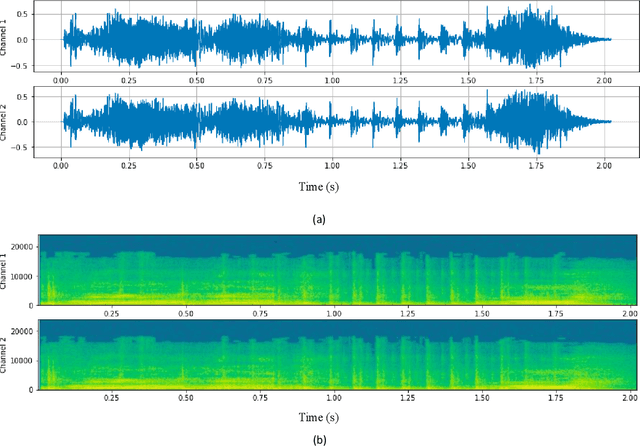Steven Jones
Audio Analytics-based Human Trafficking Detection Framework for Autonomous Vehicles
Sep 09, 2022



Abstract:Human trafficking is a universal problem, persistent despite numerous efforts to combat it globally. Individuals of any age, race, ethnicity, sex, gender identity, sexual orientation, nationality, immigration status, cultural background, religion, socioeconomic class, and education can be a victim of human trafficking. With the advancements in technology and the introduction of autonomous vehicles (AVs), human traffickers will adopt new ways to transport victims, which could accelerate the growth of organized human trafficking networks, which can make the detection of trafficking in persons more challenging for law enforcement agencies. The objective of this study is to develop an innovative audio analytics-based human trafficking detection framework for autonomous vehicles. The primary contributions of this study are to: (i) define four non-trivial, feasible, and realistic human trafficking scenarios for AVs; (ii) create a new and comprehensive audio dataset related to human trafficking with five classes i.e., crying, screaming, car door banging, car noise, and conversation; and (iii) develop a deep 1-D Convolution Neural Network (CNN) architecture for audio data classification related to human trafficking. We have also conducted a case study using the new audio dataset and evaluated the audio classification performance of the deep 1-D CNN. Our analyses reveal that the deep 1-D CNN can distinguish sound coming from a human trafficking victim from a non-human trafficking sound with an accuracy of 95%, which proves the efficacy of our framework.
Virtualization of Electromagnetic Operations (VEMO)
Feb 15, 2022Abstract:Today's operations in the spectrum occur across many disparate and unique devices. For example, a military or commercial maritime platform can have dozens of apertures used for various functions. Utilizing software-defined radios and dynamic analog front ends, we propose that future systems involving multiple applications for RF, virtualize operations to gain performance efficiencies. The concept of virtualization of electromagnetic operations (VEMO) is considered a means to enable flexible use of hardware and spectrum resources to achieve diverse mission requirements in military and commercial settings. This will result in more efficient use of resources, including size/weight/power and integration of objectives across systems that employ the electromagnetic spectrum.
 Add to Chrome
Add to Chrome Add to Firefox
Add to Firefox Add to Edge
Add to Edge